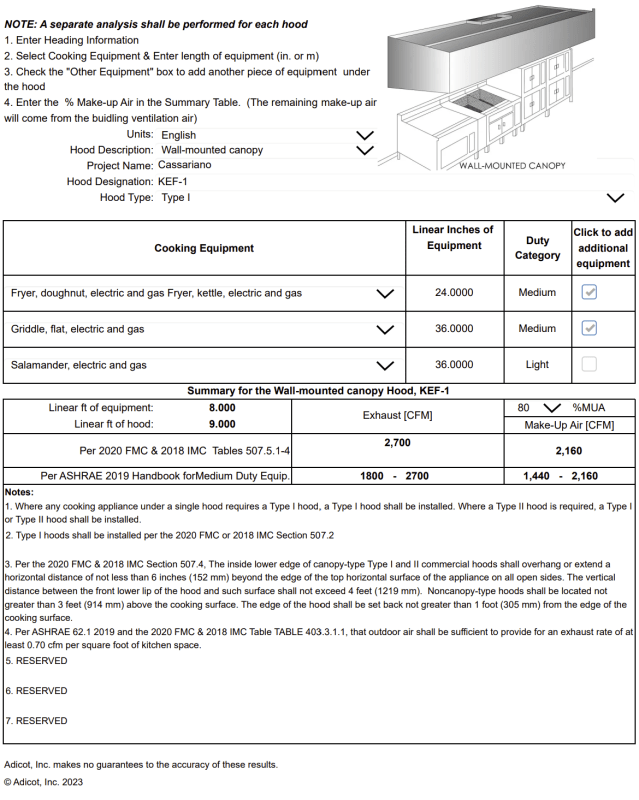Hello, everyone.
I have a friend who is an executive chef seeking my help about his kitchen which is discomforting to him and with his staff.
The last HVAC contractor who made the rehab of his kitchen supplied them with a motor capacity that is half the capacity from the originally installed 15HP to only 7.5HP (bummer).
Based from the total kitchen area of 1821 sq.ft. and a ceiling height of 8 ft, the overall volume of air inside the kitchen is 14339 cu.ft. and their island type exhaust hood size is 18ft x 6 ft x 2 ft.
I counted 27 various cooking (open tops ranges, stock pot stoves, grill, griddle, convection and microwave ovens, wok, fryer, upright refrigerators and freezers, rice cookers, counter table equipment like bar blender, panini grill, food processor) . They also have a hood dishwasher that produces steam.
Our actual readings using anemometer results a total air coming into the kitchen from both fresh air and conditioned air is 32,016 cfm while readings from the exhaust hood is only 12,396 cfm.
Will a 10HP motor centrifugal blower should be enough in lieu of the 15HP that was originally installed based from the above kitchen size? Definitely a 7.5HP isn't sufficient. What is the air change rate to be used?
I'm getting a total of 37,142 cfm air to ventilate using ACR of 53, is this correct?
The ACR of 53 was computed based on per unit of kitchen equipment CFM per sq-ft area of hood divided the total air volume of the kitchen.
Appreciate any help.
Chefs Mate
I have a friend who is an executive chef seeking my help about his kitchen which is discomforting to him and with his staff.
The last HVAC contractor who made the rehab of his kitchen supplied them with a motor capacity that is half the capacity from the originally installed 15HP to only 7.5HP (bummer).
Based from the total kitchen area of 1821 sq.ft. and a ceiling height of 8 ft, the overall volume of air inside the kitchen is 14339 cu.ft. and their island type exhaust hood size is 18ft x 6 ft x 2 ft.
I counted 27 various cooking (open tops ranges, stock pot stoves, grill, griddle, convection and microwave ovens, wok, fryer, upright refrigerators and freezers, rice cookers, counter table equipment like bar blender, panini grill, food processor) . They also have a hood dishwasher that produces steam.
Our actual readings using anemometer results a total air coming into the kitchen from both fresh air and conditioned air is 32,016 cfm while readings from the exhaust hood is only 12,396 cfm.
Will a 10HP motor centrifugal blower should be enough in lieu of the 15HP that was originally installed based from the above kitchen size? Definitely a 7.5HP isn't sufficient. What is the air change rate to be used?
I'm getting a total of 37,142 cfm air to ventilate using ACR of 53, is this correct?
The ACR of 53 was computed based on per unit of kitchen equipment CFM per sq-ft area of hood divided the total air volume of the kitchen.
Appreciate any help.
Chefs Mate


![[thumbsup2] [thumbsup2] [thumbsup2]](/data/assets/smilies/thumbsup2.gif)